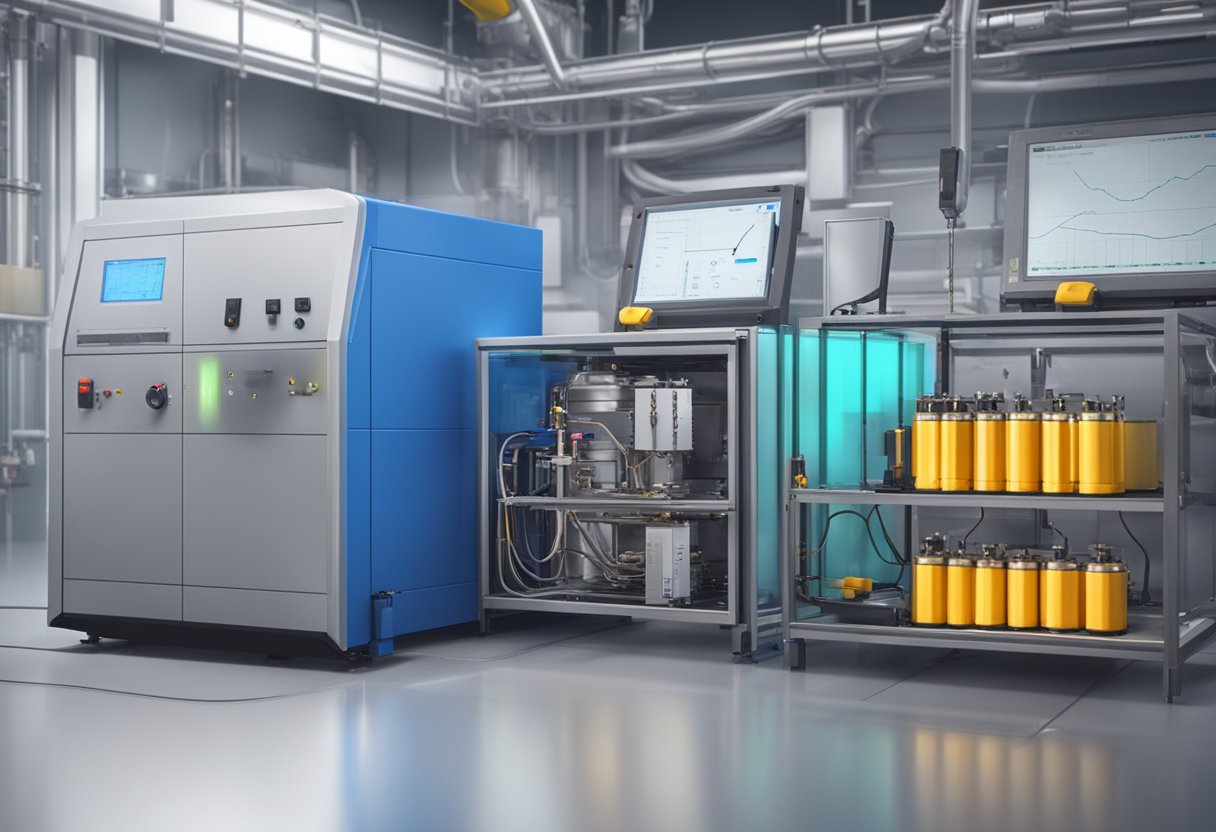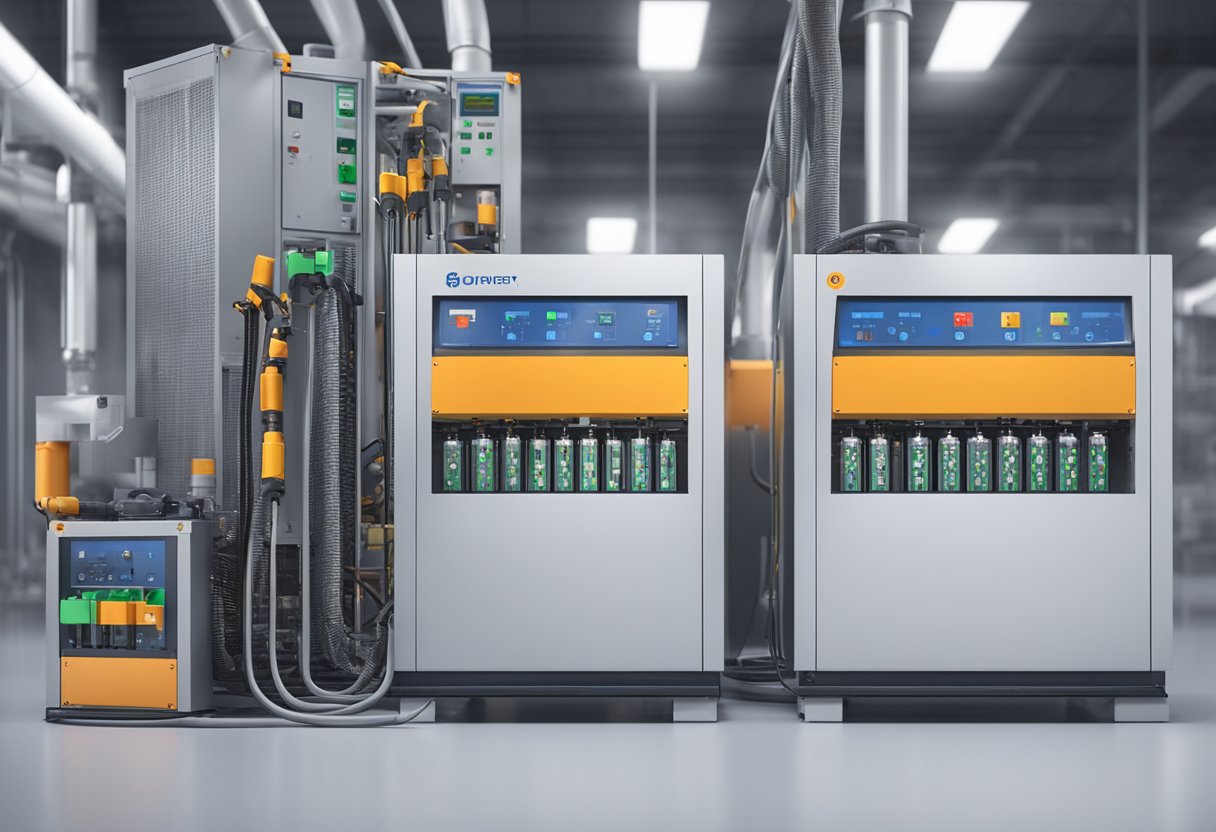Battery Thermal Runaway Testing: Understanding the Importance of Safety Measures
Battery thermal runaway testing is an essential process in ensuring the safety and reliability of lithium-ion batteries. Thermal runaway is a phenomenon that occurs when a battery’s temperature rises uncontrollably, leading to a self-sustaining reaction that can cause the battery to explode or catch fire. This is why it is important to perform thermal runaway testing to identify potential hazards and prevent accidents.

During thermal runaway testing, a battery is subjected to various stressors, such as high temperatures, overcharging, or mechanical abuse, to see how it reacts and if it can withstand the stress without failing. The testing can also help determine the optimal design and materials for the battery to improve its performance and safety. The results of the testing can be used to develop guidelines for handling, transporting, and storing the batteries to minimize the risk of thermal runaway.
Overall, battery thermal runaway testing is a critical step in ensuring the safety and reliability of lithium-ion batteries. By subjecting the batteries to different stressors and analyzing their behavior, manufacturers can identify potential hazards and design batteries that are more resistant to failure. This helps prevent accidents and ensures that the batteries can be used safely in various applications, from consumer electronics to electric vehicles and renewable energy storage systems.
Fundamentals of Battery Thermal Runaway

When designing and testing batteries, it is essential to understand the fundamentals of battery thermal runaway. This section will cover the chemical mechanisms and thermal runaway triggers.
Chemical Mechanisms
Battery thermal runaway is a self-sustaining reaction that occurs when the heat generated by the battery exceeds the heat dissipation rate. This reaction is caused by the thermal decomposition of the battery’s electrolyte, which releases gases and heat. The heat generated by this reaction can cause adjacent cells to undergo the same reaction, leading to a chain reaction.
During thermal runaway, the battery’s internal temperature can reach as high as 1000°C, which can cause the battery to rupture, leak, or even explode. This reaction can also release toxic gases, such as hydrogen fluoride and hydrogen chloride, which can pose a significant safety risk.
Thermal Runaway Triggers
Thermal runaway can be triggered by mechanical, electrical, or thermal abuse. Mechanical abuse can include puncturing, crushing, or bending the battery. Electrical abuse can include overcharging, short-circuiting, or exposing the battery to high currents. Thermal abuse can include exposing the battery to high temperatures or exposing the battery to a fire.
To prevent thermal runaway, it is essential to test batteries under a variety of conditions to ensure that they can withstand abuse. This testing should include thermal runaway testing, which involves exposing the battery to high temperatures and monitoring its response. It is also essential to design batteries with safety features, such as thermal management systems and pressure relief valves, to prevent thermal runaway from occurring.
In conclusion, understanding the fundamentals of battery thermal runaway is critical to designing and testing safe batteries. By understanding the chemical mechanisms and thermal runaway triggers, you can design batteries that can withstand abuse and prevent thermal runaway from occurring.
Testing Standards and Protocols

When it comes to testing for Battery Thermal Runaway, there are international standards and industry-specific protocols that are followed. These standards and protocols help ensure that the testing is done in a consistent and reliable manner. In this section, we will discuss the two types of testing standards and protocols.
International Standards
International standards are developed by organizations that have a global reach and are recognized by many countries. These standards are designed to ensure that products and services are safe, reliable, and of good quality. In the case of Battery Thermal Runaway, there are two main international standards that are followed:
-
IEC 62619: This standard provides the requirements and guidelines for testing the safety of lithium-ion battery cells and systems. It includes tests for thermal abuse, mechanical abuse, electrical abuse, and environmental abuse.
-
UL 9540A: This standard provides the test method for evaluating thermal runaway fire propagation in Battery Energy Storage Systems (BESS). It is designed to help manufacturers prove compliance with regulations and ensure the safety of BESS.
Industry-Specific Protocols
Industry-specific protocols are developed by organizations that are specific to certain industries. These protocols are designed to ensure that the testing is done in a manner that is relevant to the specific industry. In the case of Battery Thermal Runaway, there are several industry-specific protocols that are followed:
-
SAE J2929: This protocol provides the test method for evaluating the thermal propagation of a single lithium-ion cell. It includes tests for thermal abuse, mechanical abuse, and electrical abuse.
-
UL 1973: This protocol provides the requirements and guidelines for evaluating the safety of stationary battery systems. It includes tests for thermal abuse, mechanical abuse, and electrical abuse.
It is important to note that these standards and protocols are constantly evolving as new technologies emerge and new safety concerns arise. Therefore, it is important to stay up-to-date with the latest testing requirements and guidelines to ensure the safety and reliability of Battery Energy Storage Systems.
Thermal Runaway Test Procedures
Preparation and Safety Measures
Before conducting any thermal runaway testing, it is essential to take proper safety measures. You should wear appropriate personal protective equipment (PPE) such as gloves, safety glasses, and lab coats. Ensure that the testing area is well-ventilated and has fire extinguishers nearby.
The preparation stage involves setting up the test equipment, such as the calorimeter, thermocouples, and data acquisition system. You should also prepare the battery cells or packs for testing, such as conditioning them to a specific state of charge or temperature. It is crucial to follow the manufacturer’s instructions for handling and preparing the batteries to ensure accurate test results.
Test Execution
The test execution stage involves heating the battery cells or packs to induce thermal runaway and measuring their thermal behavior. You can initiate the thermal runaway by applying heat, electrical, or mechanical abuse to the batteries. During the test, you should monitor the temperature, pressure, and gas emissions to understand the thermal behavior of the batteries.
It is essential to follow the testing standards and procedures, such as UL 9540A, to ensure accurate and repeatable test results. The testing duration and conditions should be documented to provide a clear understanding of the test results.
Data Collection
The data collection stage involves analyzing the test results and drawing conclusions about the battery’s thermal behavior. You should collect data on temperature, pressure, and gas emissions during the test and analyze the data to understand the battery’s thermal behavior.
It is crucial to document the test results, including the data collected, test conditions, and conclusions. The test report should include a summary of the test results, any observed anomalies, and recommendations for improving the battery’s thermal behavior.
In conclusion, following the proper procedures for thermal runaway testing is essential to ensure accurate and repeatable test results. By taking appropriate safety measures, preparing the batteries, executing the test correctly, and collecting and analyzing the data, you can gain valuable insights into the battery’s thermal behavior and improve its safety.
Analysis of Test Results
Interpreting Data
Interpreting data from battery thermal runaway testing is essential to identify the root cause of the failure and to prevent future occurrences. The data collected during testing can be analyzed in various ways, including statistical analysis, graphical analysis, and regression analysis. Statistical analysis involves the application of statistical methods to identify patterns and trends in the data. Graphical analysis involves the use of charts and graphs to visualize the data and identify any anomalies. Regression analysis involves the use of mathematical models to predict the behavior of the battery under different conditions.
One of the key parameters to consider when interpreting data from battery thermal runaway testing is the temperature profile. The temperature profile provides information about the rate of temperature rise, peak temperature, and duration of the thermal event. Another important parameter is the pressure profile, which provides information about the rate of pressure increase, peak pressure, and duration of the pressure event. Both temperature and pressure profiles can be used to identify the failure mode and to determine the root cause of the failure.
Failure Mode Analysis
Failure mode analysis is a critical step in the analysis of test results. It involves identifying the specific mode of failure that led to the thermal runaway event. For example, the failure mode could be due to a short circuit, overcharging, mechanical abuse, or manufacturing defects. Once the failure mode is identified, it is important to determine the root cause of the failure. This could involve identifying the specific component that failed, such as the separator, electrode, or electrolyte, and determining the reason for the failure, such as contamination, poor assembly, or design flaws.
In addition to failure mode analysis, it is important to consider the impact of external factors on the battery performance. For example, the temperature and humidity of the test environment can have a significant impact on the battery behavior. Similarly, the state of charge, age, and usage history of the battery can also influence the thermal runaway behavior. By considering these external factors, it is possible to develop a more comprehensive understanding of the battery behavior and to improve the safety and performance of the battery system.
Overall, the analysis of test results is a critical step in the battery thermal runaway testing process. By interpreting the data and conducting failure mode analysis, it is possible to identify the root cause of the failure and to develop strategies for preventing future occurrences.
Preventive Measures and Safety Design
When it comes to battery thermal runaway testing, preventive measures and safety design are critical considerations. By implementing the right design and protective technologies, you can prevent thermal runaway from occurring in your battery and ensure that it operates safely and effectively.
Battery Design Considerations
One of the most important considerations in battery design is thermal management. Proper thermal management can help prevent thermal runaway by regulating the temperature of the battery and preventing it from overheating. This can be achieved through the use of materials that have high thermal conductivity, as well as by designing the battery with a cooling system that can dissipate heat effectively.
Another key consideration in battery design is the selection of materials. Certain materials can be more prone to thermal runaway than others, so it’s important to choose materials that are stable and have a low risk of thermal runaway. Additionally, designing the battery with a robust casing and insulating materials can help prevent external factors from causing thermal runaway.
Protective Technologies
In addition to proper battery design, there are several protective technologies that can be used to prevent thermal runaway. One such technology is a Battery Management System (BMS), which monitors the battery’s performance and can detect any abnormalities that may indicate thermal runaway. The BMS can then take action to prevent thermal runaway from occurring, such as shutting down the battery or activating a cooling system.
Another protective technology is the use of thermal fuses, which are designed to break the circuit in the event of a temperature spike. This can prevent thermal runaway from occurring and protect the battery from damage.
By implementing these preventive measures and safety design considerations, you can ensure that your battery is safe and reliable, and that it operates effectively without the risk of thermal runaway.


































